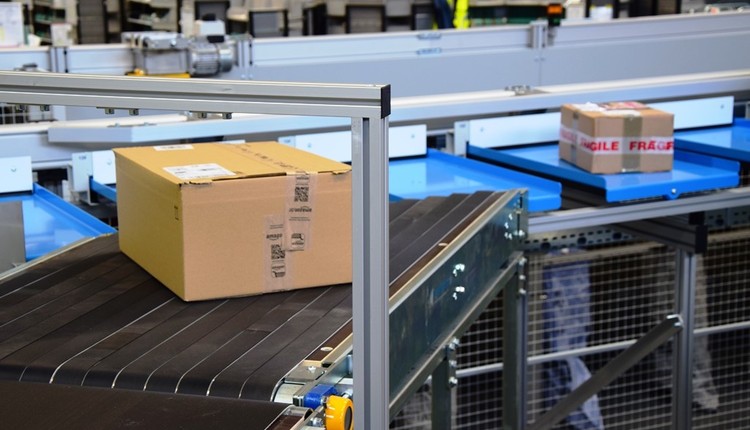Window Book Postal Concierge--The United States Postal Serviceâ® (USPSâ®) is replacing the Confirmation Services barcode with the Intelligent Mailâ® Package Barcode (IMâ®pb) for tracking of parcels and for Extra Services. The barcode includes the customer account (Mailer ID), ZIP Code routing, payment channel information, class of mail and service combination of the mail piece. The IMpb is similar to the Intelligent Mail Barcode (IMb) used for Letter and Flat size mail, but is designed specifically for parcels.
Time line
This new barcode for parcels became a requirement for PC Postage customers effective January 22, 2012, with a transition period until July 31, 2012. Also, customers claiming presort or destination entry prices (excepting Standard Mail) must use an IMpb, legacy tracking barcode, or Extra Services barcode. Starting January 7, 2013, the IMpb will be required for all tracking and Extra Services barcodes, and all First-Class Package Services, Parcel Select, Parcel Select Light Weight, Bound Printed Matter, Media Mail and Library Mail parcels in order to claim presort and destination pricing.
Benefits
One of the main benefits of this change is that Delivery Confirmation tracking is provided at no charge (excepting Certified Mail, Registered Mail, Adult Signature, Parcel Return Service, COD, and Open & Distribute products). In addition, the eligibility for presort and destination entry pricing for parcels, effective January 7, 2013, will be tied to the use of the IMpb. The new IMpb accommodates either a 6-digit or 9-digit MID and serial numbers up to 14 digits long, which allows large shippers more flexibility to maintain barcode uniqueness. The 3-digit Service Type Code (STID) within the IMpb identifies the product and service combinations, which provides for more accurate reporting and service measurement. Also, the file format of the tracking data allows customers to link the packages to the Intelligent Mail Tray and Intelligent Mail Container barcodes, which provides for more visibility of the packages as they travel through the USPS network.
Handling Change
Shippers will need to work with their mail service and software providers to insure that they will be ready for the January 2013 deadline. Shippers will need to re-certify their parcel barcodes with the USPS, as well as re-certify their MID's. There are new versions of the Shipping Services File and Shipping Services Extract File, adding space and fields for the IMpb, tray and container barcodes, as well as data for special programs, such as Open & Distribute. These new software versions will support the legacy tracking and Extra Services barcodes during the transition period, so customers should be working on these updates as soon as possible. The 3-digit Service Type Codes are different for IMpb than they are for the IMb, so shippers who may also use IMb should take care to utilize the correct STID's for their parcels.
For more information on IMpb, consult the technical guides [Barcode, Package, Intelligent Mail (USPS2000508) document and Publication 199: Intelligent Mail Package Barcode (IMpb) Implementation Guide] available on the USPS RIBBS web site. Also, for Electronic Verification System (eVS) users, consult Publication 205.
Don't miss out on our educational mailing webinars! Log on to our webinar registration site to sign up.
Time line
This new barcode for parcels became a requirement for PC Postage customers effective January 22, 2012, with a transition period until July 31, 2012. Also, customers claiming presort or destination entry prices (excepting Standard Mail) must use an IMpb, legacy tracking barcode, or Extra Services barcode. Starting January 7, 2013, the IMpb will be required for all tracking and Extra Services barcodes, and all First-Class Package Services, Parcel Select, Parcel Select Light Weight, Bound Printed Matter, Media Mail and Library Mail parcels in order to claim presort and destination pricing.
Benefits
One of the main benefits of this change is that Delivery Confirmation tracking is provided at no charge (excepting Certified Mail, Registered Mail, Adult Signature, Parcel Return Service, COD, and Open & Distribute products). In addition, the eligibility for presort and destination entry pricing for parcels, effective January 7, 2013, will be tied to the use of the IMpb. The new IMpb accommodates either a 6-digit or 9-digit MID and serial numbers up to 14 digits long, which allows large shippers more flexibility to maintain barcode uniqueness. The 3-digit Service Type Code (STID) within the IMpb identifies the product and service combinations, which provides for more accurate reporting and service measurement. Also, the file format of the tracking data allows customers to link the packages to the Intelligent Mail Tray and Intelligent Mail Container barcodes, which provides for more visibility of the packages as they travel through the USPS network.
Handling Change
Shippers will need to work with their mail service and software providers to insure that they will be ready for the January 2013 deadline. Shippers will need to re-certify their parcel barcodes with the USPS, as well as re-certify their MID's. There are new versions of the Shipping Services File and Shipping Services Extract File, adding space and fields for the IMpb, tray and container barcodes, as well as data for special programs, such as Open & Distribute. These new software versions will support the legacy tracking and Extra Services barcodes during the transition period, so customers should be working on these updates as soon as possible. The 3-digit Service Type Codes are different for IMpb than they are for the IMb, so shippers who may also use IMb should take care to utilize the correct STID's for their parcels.
For more information on IMpb, consult the technical guides [Barcode, Package, Intelligent Mail (USPS2000508) document and Publication 199: Intelligent Mail Package Barcode (IMpb) Implementation Guide] available on the USPS RIBBS web site. Also, for Electronic Verification System (eVS) users, consult Publication 205.
Don't miss out on our educational mailing webinars! Log on to our webinar registration site to sign up.



